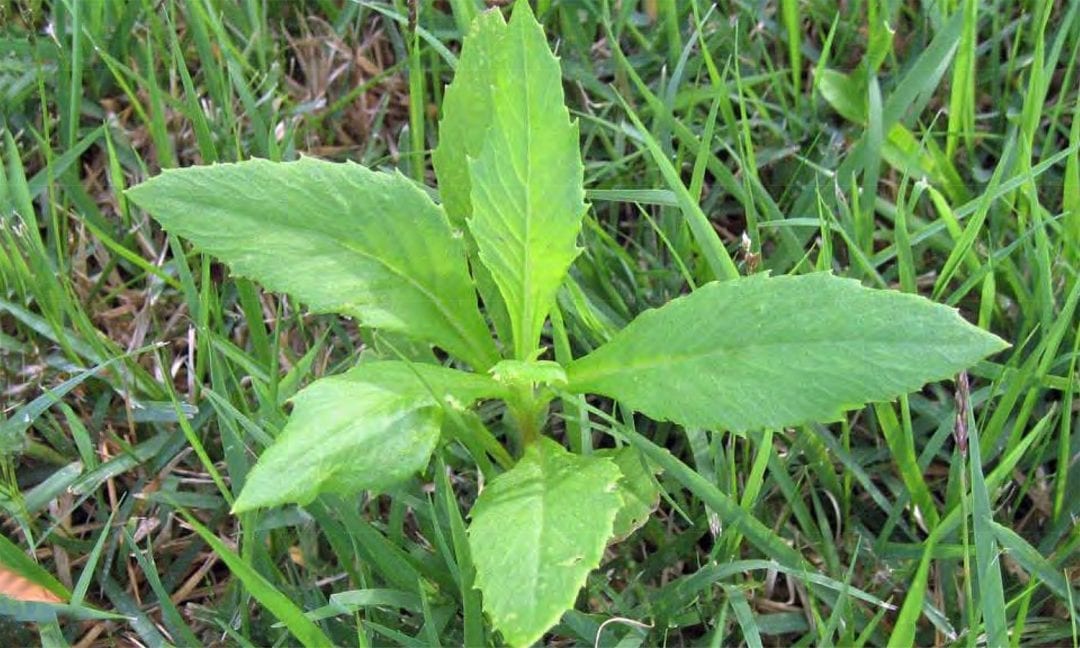Fireweed is a perennial weed that can quickly take over gardens, lawns, and fields if left unchecked. With its tall stalks topped with bright pinkish-purple blooms, fireweed may look pretty but it’s an aggressive spreader that’s difficult to eradicate.
While herbicides provide the most effective control, fireweed can also be managed through manual removal, mowing, or mulching before it goes to seed. Tackling this invasive weed takes patience and persistence.
What is Fireweed?
Fireweed, also known as rosebay willowherb, is a cool season perennial native to northern regions. It thrives in disturbed soils and spreads rapidly from seeds and an extensive underground root system.
Fireweed grows over 3 feet tall with elongated leaves. Clusters of pinkish purple flowers bloom starting from the bottom up through late summer. By fall fireweed goes to seed producing thousands of tiny fluffy seeds easily dispersed by wind.
Left alone dense stands of fireweed will dominate an area crowding out grasses, wildflowers, and crops. It’s especially problematic in pastures, hay fields, orchards, timberlands, and gardens.
Why is Fireweed Hard to Control?
What makes fireweed so difficult to manage are the following characteristics:
- Root fragments left behind sprout new plants
- Seeds survive many years in the soil
- Each plant can produce over 80,000 seeds that spread far on the wind
- Grows well in poor, disturbed soils
- Adapts to mowing, readily regrowing from the base
Controlling fireweed requires stopping seed production and root/shoot regrowth using a combination of methods.
Manual and Mechanical Removal
Manual weed control methods like hand pulling, hoeing, and mowing provide fireweed suppression but rarely full eradication.
Hand Pulling
Grasping stems near the base and gently pulling to remove roots can eliminate young fireweed plants. Take care to remove all root fragments which will resprout if left behind.
Hand pulling is easiest when soil is moist and should be done before flowering and seed set. Wear gloves and long sleeves to prevent skin irritation from fireweed’s hairy stems and leaves.
Hoeing
Using a sharp hoe to slice fireweed stems 1-2 inches below ground is another manual control option. Severing roots starves the plant while disturbing the soil exposes remnants to dry out.
Repeat hoeing as new shoots appear. Avoid overly deep cultivation which can spread root sections.
Mowing
Frequent mowing to a low height prevents seed production. Mow fireweed in flower bud stage and repeat every 2-3 weeks through fall. This won’t kill plants but helps stop spread.
Collect and dispose of clippings after mowing to remove cuttings that may root if left on the ground.
Mulching for Suppression
Mulching is effective at smothering young fireweed plants and restricting regrowth.
Use 4-6 inches of mulch materials like wood chips, shredded bark, compost, or yard waste. Be sure to overlap the diameter of plant stems to block light.
Replenish as needed since fireweed may continue to emerge. Do not use plastic sheeting as this won’t control root growth.
Chemical Control Methods
While labor intensive, the manual and mulching options above can help suppress a light infestation. However, for heavy fireweed invasion, herbicide application is the best bet for complete control.
Several broadleaf weed killers exist for fireweed management:
- 2,4-D amine formulations (many brand names)
- Dicamba products like Banvel, Oracle
- Glyphosate non-selective herbicides like Roundup
For best results:
- Treat younger, actively growing plants before flowering.
- Thoroughly wet all leaves and stems but avoid runoff.
- 2,4-D and dicamba won’t kill roots so re-treatment is needed on regrowth.
- Glyphosate translocates to the roots for longer control but kills all plant types.
When using any chemical control, carefully follow label directions for correct dosage, timing, and required safety precautions.
Ongoing Prevention is Key
Getting rid of fireweed takes patience and persistence. Plan to make control efforts for several years to fully clear an infestation and prevent return.
Once eliminated, practicing good landscape stewardship is the best way to keep this aggressive invader from coming back. That includes:
- Maintaining healthy plant and lawn areas to compete with weeds.
- Not disturbing or tilling soil more than necessary.
- Quickly treating patchy areas that can provide a foothold.
- Monitoring regularly and removing young plants before they spread.
With dedication to control and prevention, you can successfully manage fireweed for good! Just don’t let this stubborn weed ever get fully established in your landscape again.
How to safely dispose of Fireweed
FAQ
Should I pull up fireweed?
How poisonous is fireweed?
How invasive is fireweed?
Is fireweed good for anything?
What is fireweed & how do I get rid of it?
Fireweed is a cool-season plant that grows in the top thatch layer of your grass, as opposed to growing in the soil, which makes it more difficult to control. Pre-emergent herbicides that seep into the soil to eliminate soil rooted weeds are not an effective solution.
Is Fireweed A weed?
Although some varieties of Fireweed produce beautiful, vivid flowers, it is an un-welcomed addition to residential lawns. Fireweed is more difficult to control than broadleaf and grassy weeds. The roots of the Fireweed plant do not stretch down into the soil. Instead, the plant grows exclusively in the thatch layer.
How do you keep fireweed out of your yard?
By mowing often and keeping the plants short they do not have the opportunity to produce seeds, which will help to keep the weed at bay next year. Mowing also helps aesthetically. When the weed is short it isn’t as noticeable and will help you hold out until temperatures take care of the Fireweed for you.
How do you control fireweed in Queensland?
Regular spraying of pastureland with selected herbicides may help control fireweed. Chemicals recommended by the Queensland Department of Primary Industries and NSW Agriculture include Bromoxynil (sold as Bromocide 200, Brominil 200 and Buctril 200). The herbicide should be applied on young plants before flowering.

